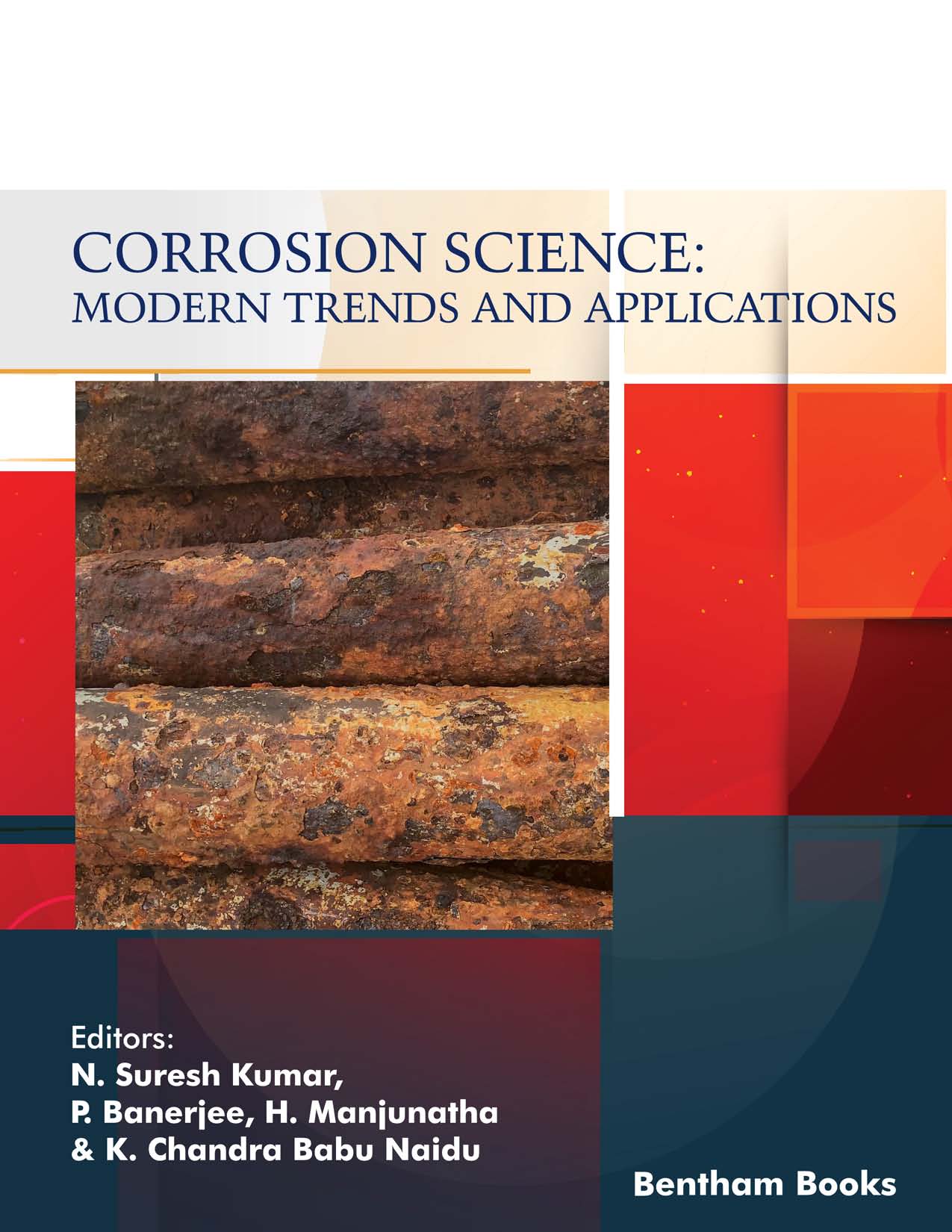According to the European Federation of Corrosion, the term corrosion signifies an irreversible process due to an interaction with the environment, which causes detrimental effects on the materials permanently. For any industrial applications, this process has a severe impact on revenue. For our health and environment, it can damage several vital sections. There is a severe impact on the GDP of the country as well due to the overall damages. In this sense, the investment of scientific talent for the control of corrosion is always economically justified for mankind.
The overall growth of the Industry 4.0 and subsequent demand for new innovative materials opens a new field of mechanism to control premature degradation of the material. This book entitled ‘Corrosion Science-Modern Trends and Applications’ with twelve high-quality chapters provided the required picture of the recent contribution and development in the field of corrosion.
Chapter 1 presents the accelerating corrosion test method with various operating apparatus designed by ASTM standard guide. Another most important use of electrochemical techniques, namely linear polarization, potentiodynamic polarization and electrochemical impedance spectroscopy, discusses measuring the corrosion rate for coated and painted specimens.
Chapter 2 discusses various anticorrosive coatings, namely barrier, inhibitive, sacrificial, inorganic, and organic coatings. The various modified coatings are introduced to reduce pores and defects observed in conventional coatings.
Chapter 3 reviews corrosion of electronic printing board with the possibilities and types of the corrosion as well as their protective phenomena. The chapter highlights the corrosion in electronic gadgets and printed electronic circuit board since nowadays, which have printed electronic circuit board.
Chapter 4 contains a discussion on protective materials like conductive polymer and its composites such as conducting polymers mixers of magnetic materials and graphene additives on corrosion resistance capabilities.
Chapter 5 discusses corrosion protection in drinking water systems. The chapter presents corrosion of drinking water distribution system (DWDS) based on various parameters like pH of water, the hardness of water, alkalinity of water, buffer intensity, total dissolved oxygen and total inorganic carbon and organic carbon.
Chapter 6 concentrates on the corrosion of concrete. The electrons can move in the steel rebar, and the ions can move in the concrete, which acts as an electrode leading to the corrosion in concrete. To know the damage of the reinforcement in the concrete X-ray microcomputed tomography is employed.
Chapter 7 presents the corrosion effect on the aluminium alloy. The damage caused by the Sulfate Reducing Bacteria (SRB) is discussed here. The microstructure cracking occurs due to many factors like corrosion, mechanical stress, thermal stress and bacterial adherence.
Chapter 8 focuses on the corrosion problems of nuclear waste systems because of the disposal. The discussion between the rate of corrosion of all the nuclear waste packages with the nuclear waste disposal concept and the safety measures of the landfill sites is featured. Furthermore, the corrosion of the various kinds of nuclear waste packages, and the metallic container for the high-level waste packages review given the deterioration or dissipation processes, the experimental in-situ approaches, and the exemplary of corrosion of nuclear waste and lifetime forecasting are presented in this chapter.
Chapter 9 presents the impact of Microbiologically influenced corrosion (MIC) in various fields like industries related to healthcare, marine, petroleum, and oil. An attempt is made to present MIC and its underlying mechanisms. Cathodic depolarization theory, along with the other mechanisms supporting MIC caused by sulfate/nitrate-reducing bacteria, has been the focus of this chapter.
Chapter 10 recognizes corrosion as a severe problem in the power plant sector. Corrosion gives rise to wastage of material in huge quantities, failure of tubes, leakage of tubes, sudden shutdowns as well as the reduction in the lifetime of components. Also, it reduces the thermal and electrical efficiency of a power plant to a maximum extent leading to minimum maintenance, outage, and replacement cost.
Chapter 11 depicts the impacts of corrosion on significant industries in chemical and fertilizers industries. In this chapter, they focus on corrosion related to chemical and fertilizer industries, the impact of corrosion on their efficiency, corrosion controlling methods and their interrelated phenomena.
Chapter 12 focuses on Marine corrosion, its mechanism, factors affecting corrosion, and several methods adopted for the prevention of corrosion describes with an emphasis on marine corrosion inhibitors. The use of inorganic compounds and paints as corrosion inhibitors is discussed in the chapter.
K. Chandra Babu Naidu
Department of Physics
GITAM Deemed To Be University, Bengaluru Campus
Bengaluru -562163, Karnataka
India

